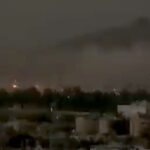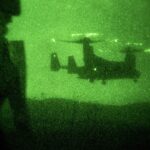In preparation for a ground assault, Turkish F-16s and artillery units have attacked more than ten positions controlled by the Syrian Democratic Forces (SDF) in northern Syria on October 9, 2019. The SDF returned fire with rocket attacks on Turkish border towns.
Despite international pressure, Turkish President Erdogan has announced that the Turkish military and the “Syrian National Army” (SNA)” will cross the Syrian border in the next hours. The SNA is a coalition of Turkish-backed Sunni-Arab and Turkmen rebel groups that already spearheaded Turkey’s previous military operations in Syria.
The Turkish-SNA operation “Peace Spring” aims to establish a 30 km deep “safe zone” at the Turkish-Syrian border, where millions of Syrian refugees could be repatriated. The initial stage of the advance will, however, only encompass the stretch of Syrian land between Tel Abyad and Ras al Ayn, up until the M4 highway, as US forces still remain outside this area. The US military has only vacated four observation posts on the borderline and withdrawn to bases south of the M4 highway.

Approximate tactical situation in northern Raqqa and Hasakah provinces, Syria via T-intelligence
In the past 72 hours, Turkey has amassed hundreds of SNA militiamen from Northern Aleppo and deployed artillery units to the Turkish border towns of Akçakale and Ceylanpınar but also reinforced their positions in Jarabulus, Azzaz and northern Manbij (Syria). The Tel-Abyad-Ras-al-Ayn line will likely prove to be an easy capture, since the Kurdish YPG has demilitarized the area under the US-Turkish “security mechanism” (SM) that was recently negotiated. The SM calls for the establishment of a limited 15 km deep buffer zone policed by combined American-Turkish military patrols.
Commander-in-chief and President Donald Trump has ordered the 2,500 US troops in Syria not to intervene on behalf of any side. While the US military will not defend the SDF, the Department of Defense has disconnected the Turkish military from their ISR (Intelligence, Surveillance and Reconnaissance) feed and Air Tasking Order to make sure that the TSNA will not profit from US intelligence.
This video is claimed to be recorded this evening in Ras al-Ayn. It shows the S-92 Utility helicopter of #US Special Forces while the city is under attack of #Turkey during #OperationPeaceSpring/ #Barışpınarı. pic.twitter.com/8lcj3ncxDi
— Air War (@TheAirWar) October 9, 2019
Due to the rapidly deteriorating security environment in northeastern Syria, the Department of Defense will likely recommend to withdraw US troops further down the Middle Euphrates River Valley. In this case, the YPG/SDF will likely make a stance along the M4 highway, leading to a heads-on confrontation with TSNA forces.
- Russia Bombs Maternity Ward & Children’s Hospital in Mariupol As Part of Siege - 10 March 2022
- T-Intell’s OSINT Training Marks One Year Anniversary - 18 November 2021
- IS-K Never Left the Battlefield - 27 August 2021





